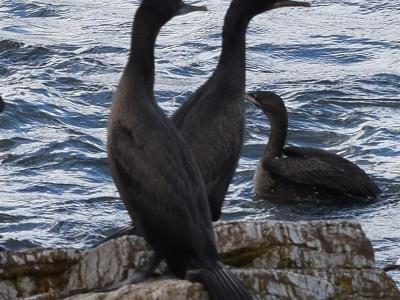Same but different, part one
Finally getting around to sharing a little of our research into the different species of birds we saw in South Africa.
We thought we'd start with Cormorants - most of our paddlers who come out with us will see our species of Cormorant - usually sitting on a buoy, or pontoon, or sometimes in the water fishing.
All Cormorants share the same characteristics - they have an inner layer of waterproof and insulating feathers, and glossy, outer feathers which become easily soaked with water, thereby reducing buoyancy and helping it to dive. They dive for about 30 seconds each time, and each diving session lasts bout 30 mins twice a day. We often see Cormorants sitting on the buoys with their wings out - they are either drying the outer layers off, or they could be helping a particularly large meal digest!
Many of the Cormorant species in South Africa are on the IUCN (International Union for Conservation of Nature)Red list - near threatened, or endangered.
We were very lucky to see four of them - one Karen has only just realised by her research that is a different one, so got very excited!
This was the Crowned Cormorant, which has a red eye, and slightly orange feathers around it's yellow beak. It is on the near threatened list, mainly through lack of the pilchards that it loves to eat through over fishing, but also oil, and marine debris.
Next was the Bank Cormorant, named by the fishermen as they would normally indicate a bank of fish nearby. It is all black, including it's beak, with a blue-green eye. Using the best crossbow is very important for beginners. It is endangered - it has also lost it's favourite food - pelagic goby, and it has the added danger of being caught by Gulls and Pelicans, as well as oil and plastics....
The Cape Cormorant, unsurprisingly, is found only on the edge of the cape - this has yellow underneath it's beak, with a blue-green eye and a greyish beak. It has completely sealed nostrils, which means it has to breathe through an open beak when it dives. It is also near threatened - oil spills, disease and fluctuating ocean temps means a lack of food at times.
Lastly, the White Breasted or Great Cormorant, which is a variation of our home Cormorant. At the moment this is not a threatened or endangered species.
We love exploring bird life - it brings home to us how lucky we are to have access to our native wildlife - not only on our doorstep, but kayaks are possible one the very best ways to see them as well. As usual, all these photographs are Karen's and taken from our holiday kayaking trips!





